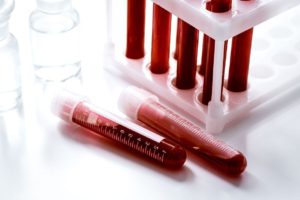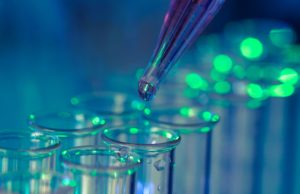Hormone Testing Basics - Part 1 - Sex Hormones
Hormone testing basics – Part 1 – Sex hormones
Are you feeling like your hormones are the cause of your health concerns and not sure where to begin? Maybe we need to dive a little deeper.
There are several tests that I use to start delving into how your hormones may be affecting your health. I have outlined them here for you so that you can begin to consider if any of these tests may help you. Keep in mind that we do not always need to turn to hormone testing to figure out what is going on. After more than 17 years of speaking to and treating thousands of women, we can often move forward with a treatment plan based on your health history and clinical picture. If we do need further information, testing is the next step. The options include blood, saliva, and urine (fresh and dried) tests. Hormones are found in the serum portion of blood, but for the sake of simplicity I will refer to blood testing since that is the body fluid being collected. The serum is separated out of the blood at the laboratory.
Please read on to learn a bit about each hormone, how and why they are measured, and the suggested timing of collection. Timing for hormone testing is key! Women’s menstrual cycles are cyclical because hormone levels fluctuate throughout the month. This needs to be accounted for when testing.

Progesterone
Progesterone is secreted after ovulation by the corpus luteum. After the egg matures and ovulation occurs, the corpus luteum is the remnant of the follicle that the egg came from. The corpus luteum secretes progesterone. Without ovulation there is no progesterone production. An unhealthy or poorly developed follicle will not make enough progesterone to adequately balance out estrogen and can result in symptoms of estrogen dominance such as: heavy and/or irregular periods; reduced fertility and anxiety to name a few.
Progesterone is often tested via blood during assessment for infertility, menstrual irregularities, PMS or perimenopause. It can also be tested via a dried urine test that I use called a DUTCH test. Progesterone must be tested on Day 21 (or 7 days post ovulation) of your cycle to be accurate. Unfortunately, it is quite common for progesterone to be tested at the wrong time. If it is not tested post ovulation, it will come back as too low. If you are unsure when you are ovulating, we will work together to figure that out.
Estrogen
Estrogen exists in three forms in the body: estradiol (E2), estriol (E3) and estrone (E1). Typically, I will test estrogen (estradiol, specifically) via blood for a fertility work up or when assessing menopausal status. In addition, I use blood to monitor bio-identical hormone levels of estrogen and progesterone to ensure we are keeping women within physiologically normal levels. The dried urine test (DUTCH test) also gives us a lot of information about the three types of estrogen, as well as how they are broken down by the liver. The metabolism of hormones is as important to a woman’s health as the amount of each hormone being secreted by the body. We turn to the dried urine test when looking to take a deeper dive into the hormonal system such as perimenopause, heavy or irregular periods, or before beginning bio-identical hormone therapy in perimenopause or menopause.

Testosterone
Testosterone is an androgen and is often thought of as a just a male hormone. But women need testosterone too! An excess of testosterone can lead to a condition in women called PCOS (poly cystic ovarian syndrome ) and if that is suspected, I will often check this and other androgens via blood. If women have too little testosterone, they can experience symptoms like low libido, fatigue, and low mood to name a few. If I suspect dysfunction in testosterone than I will use either blood or urine testing depending on the clinical picture.
Follicle Stimulating Hormone (FSH)
FSH is secreted by your pituitary and is the messenger that stimulates follicle development in the ovary. Levels of this hormone help your physician assess how responsive your ovaries are to stimulation. FSH will rise when the ovarian function declines as women transition towards menopause. We also use it to assess fertility and as part of the workup in PCOS. It is tested via blood and is often measured in conjunction with LH (luteinizing hormone) and Estradiol. Most often I test this on Day 3 of the cycle but in a menopausal woman or in a woman with no period it can be tested anytime.
Luteinizing Hormone (LH)
LH rises midcycle to stimulate the release of the egg from the follicle and is an important player in the assessment of fertility. It is also measured in blood on day 3 or can be measured via urine with the over the counter home test kits to assess ovulation (midcycle) in women trying to conceive. It is often measured via blood midcycle in assisted reproduction to assess response to medications and to prepare timelines for IUI (intra-uterine insemination) or egg retrieval for IVF.
These are just some of the basics to help you begin your journey towards hormonal health. It is not an exhaustive list but serves as a jumping off point for further discussion. There are several other tests that may also prove useful and you will always be given the why, when, and how on any suggestion that I think would be useful to allow you to make educated decisions about your personal health journey.
I hope this hormone testing primer was helpful and stay tuned for Part 2 of Hormone Testing Basics – Adrenal and Thyroid Hormones.


